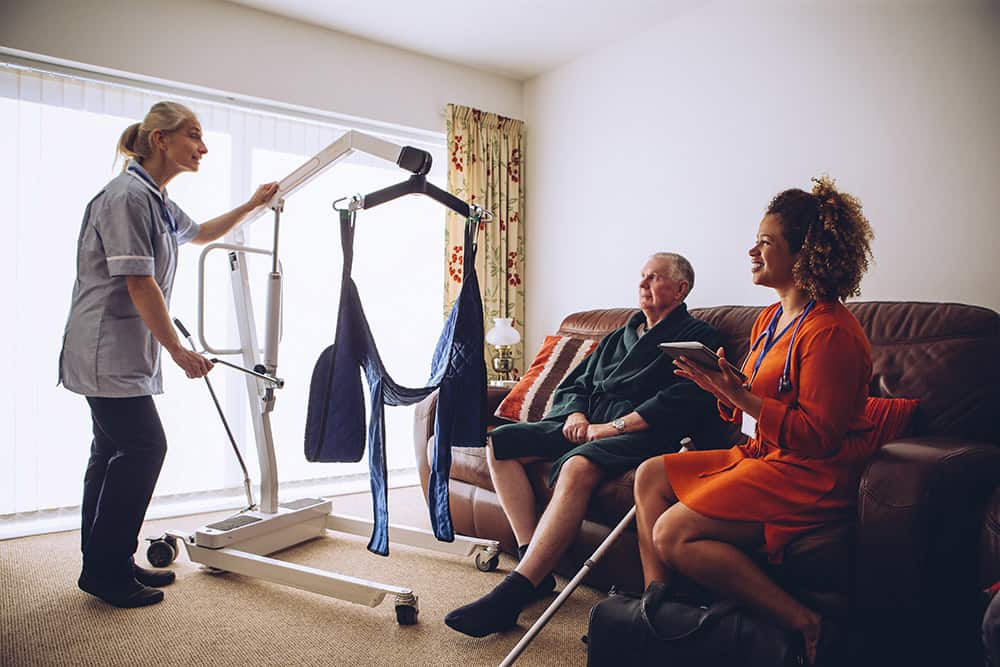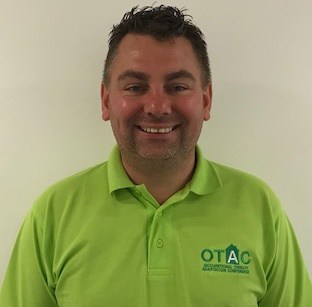The OT’s Perspective: What should we all be bearing in mind when it comes to moving and handling?
First up, you’ve probably heard the terms ‘moving and handling’ bandied around quite a lot but even though we use these terms a lot, we’re not always absolutely clear on what they mean.
So, here’s the definition according to the regulations:
“Any transporting or supporting of a load (including the lifting, putting down, pushing, pulling, carrying or moving thereof) by hand or bodily force.”
When we’re referring to moving and handling in the world of occupational therapy, we’re specifically talking about how to transport or support clients in moving from one place to another who otherwise would not be able to do so.
Examples are:
- Moving a client from their bed to a bath for washing purposes
- Moving a client from downstairs to upstairs
- Lifting a client from their bed to a wheelchair or other support device
Clearly, as with every other element of occupational therapy, our focus is simple: to allow the client to have the best quality of life possible, in the safest way possible.
Assessing Moving & Handling needs
The key to doing the above is to be absolutely clear on what is necessary for the client and how to deliver it in the safest way possible – if you can correctly assess what is needed, you can serve your clients effectively, and as a manufacturer, clinician or shop, you can then recommend the right equipment to meet the need.
In order to improve your moving and handling assessment ability, it’s worth joining the National Back Exchange and attending their conference each year.
Equally, the Disabled Living Foundation’s Moving and Handling People Conferences happen in various locations throughout the year and are well worth attending.
Single Handed Care
Over the last decade, there has been a big move towards single handed care in the word of moving and handling, and from an economic view, it makes sense.
Here’s why:
A mobile hoist used by two carers to support a person with bed transfers to a commode four times a day may cost £700 for the hoist and £35.00 per call (x 4 calls a day), at a daily cost of £140 a day.
That’s a lot of money.
Plus, if one carer is running late, the call gets delayed, and during times when resource is stretched – like over Christmas for example – the requirement for two carers makes things a lot more challenging.
On the flipside, a ceiling track hoist may cost £3,000 up front, but if it means that one carer can do the same job that would take two without the hoist, it’d take just 42 days for the cost of the hoist to be covered, releasing the second carer to help someone else.
What about unexpected Moving & Handling?
Should a fall occur, there needs to be an effective strategy for the carer that will allow them to raise the person up from the floor in a safe, dignified manner.
A person who has fallen is usually distressed and upset and potentially injured.
If injured, an ambulance should be called. If not, they may display behaviours that mean helping them could be a challenge.
Transferring a person from the floor back to standing without equipment is difficult and not recommended.
The minimum would be from the floor to a chair but even that should not be attempted if you don’t have a clear idea of how to do it.
If the client is usually hoisted, a hoist that picks up from the floor may be needed or if a risk assessment has been carried out and the falls process written, a safe single-handed care technique from the floor with the correct provision of equipment, strategy, assessment and training can be applied.
The equipment will need to be simple and intuitive to use and the staff using it will need to know how to access it.
As well as single-handed care equipment you may also require access to a slide sheet to position the person away from any immediate hazards and allow room for the equipment to be used.
What about the equipment?
A great deal of ambulance trusts now use the Mangar Health Elk or Camel which can easily be operated by one person regardless where the person falls.
The Mangar Camel is similar to the Elk, although it has a backrest support, making it suitable for more users than a Camel. The Camel is more suitable for larger or heavier clients.
Further Resources
Members of the Royal College of Occupational Therapists will be able to access moving and handling information online – there’s some good information on there, so I’d strongly recommend checking it out if you haven’t already. If not a member, do look at www.otac.org.uk as we run seminars around Moving & Handling with Handicare and work closely with Disabled Living Foundation who offer training too!
Stuart Barrow of Promoting Independence is a member of the British Association of Occupational Therapists panel and a recognised contributor in the field of home adaptations. His experience is sought by manufacturers and service providers looking for an expert opinion. He also runs the Occupational Therapy Adaptations Conference
Check out more OT’s Perspectives here for expert advice and insights




